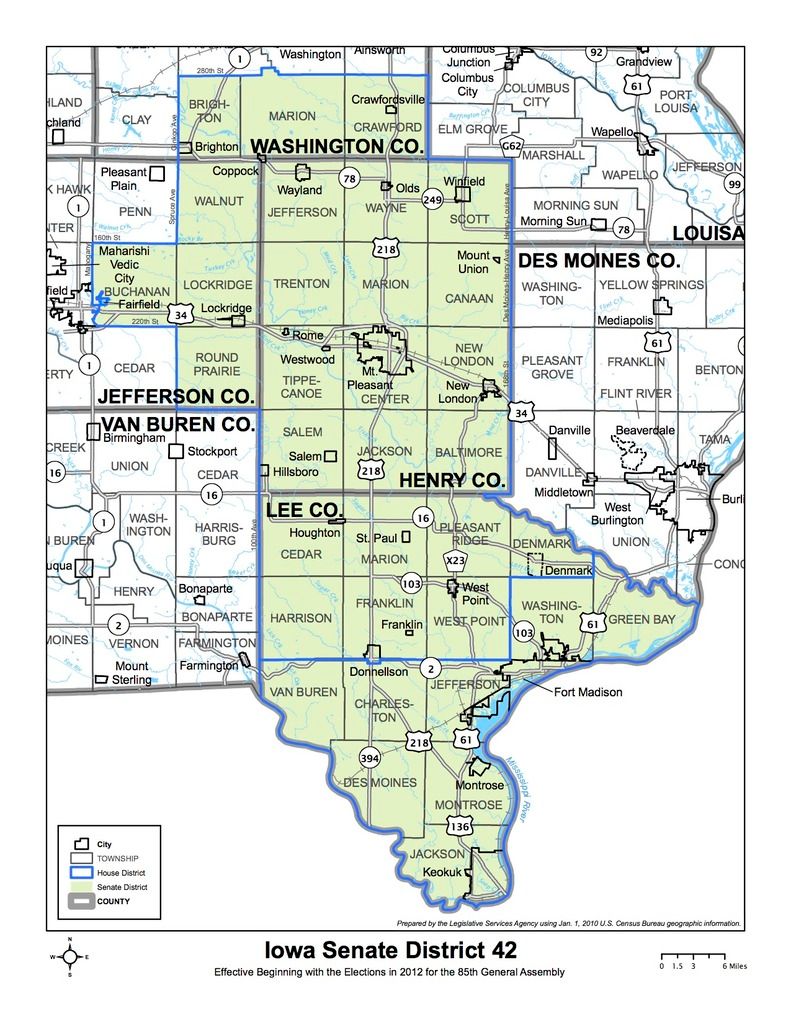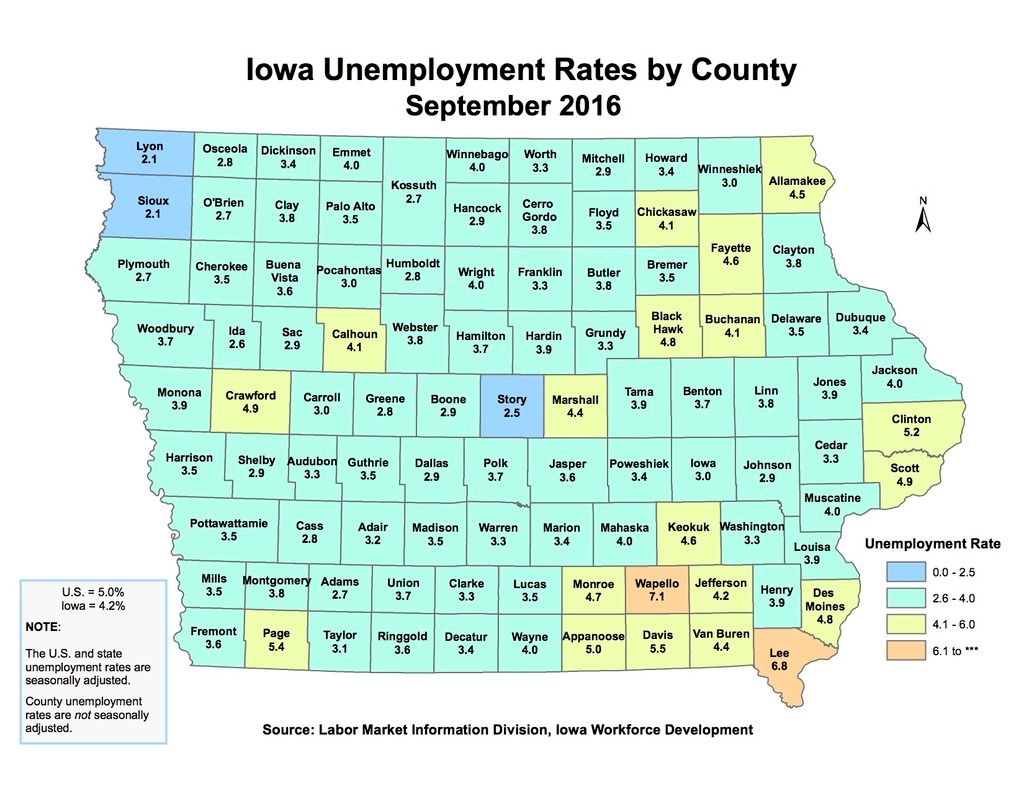Iowa is blessed with an unusually large number of competitive state legislative districts, thanks to our non-partisan redistricting process. Most election years, at least half a dozen Iowa Senate seats and twice as many House seats are in play. Campaign finance reports showing where candidates and party leaders are spending the most money provide the best clue on which legislative races are worth watching.
That said, most years at least one little-noticed candidate pulls off a big upset in an Iowa House or Senate district neither party was targeting. Now-disgraced Kent Sorenson won his first race in 2008, taking a House seat that had been considered safe for Democrats. Two years later, Kim Pearson got no help from GOP leaders en route to winning a House seat where the Democratic incumbent had been unopposed the previous election. Republican Mark Chelgren won an Ottumwa-based Senate district for the first time by ten votes. That seat had been considered so safe that the Democratic incumbent was knocking doors for a colleague in another district during the final weekend. I learned later that internal GOP polling had Chelgren almost 20 points down a couple of seeks before the election.
I can’t shake the feeling that in this strange campaign with two unpopular presidential nominees, something weird will happen in a down-ballot race no one is watching. So before I get back to Bleeding Heartland’s last few battleground Senate and House race profiles, a few words on why I feel a race in Iowa’s southeast corner could produce a shocking result.
Senate district 42 covers Lee County, Henry County, and small portions of Jefferson and Washington counties. (The Henry County seat launched Tom Vilsack’s political career.)
Democrats have a substantial but not overwhelming voter registration here: 12,638 active registered Democrats, 10,838 Republicans, and 13,752 no-party voters according to the latest figures from the Iowa Secretary of State’s office.
State Senator Rich Taylor won an open-seat race in 2012. The Iowa Senate Majority Fund controlled by Democratic leaders spent $144,917.77 on direct mail and advertising in Senate district 42 from August through mid-October, then another $106,309.12 to back up Taylor during the final weeks of the campaign.
Four years ago, the Republican Party of Iowa spent much less on behalf of Taylor’s opponent, Lee County Supervisor Larry Kruse: about $26,000 early in the general election period and $12,128.17 in the home stretch. However, Kruse raised quite a bit of money for his own campaign. The “Team Iowa PAC” controlled by Nick Ryan also chipped in $11,500.
In the end, Taylor won comfortably by 1,777 votes (50.6 percent to 44.7 percent, with 4.7 percent going to an independent candidate). President Barack Obama outpolled Mitt Romney in Senate district 42 by a slightly larger margin of 2,006 votes (52.5 percent to 45.9 percent).
Barring unusual circumstances, Iowans tend to re-elect their state legislators, so Taylor went into this year’s campaign in a stronger position than he had four years ago. Whereas the 2012 GOP candidate had won previous elections in Lee County (where many more registered voters live than in Henry County), Taylor’s current opponent is Danny Graber, a farmer from the Mount Pleasant area who has never run for office before.
Campaign finance reports show Graber raised little money this spring, summer, and fall. The Iowa GOP is spending hundreds of thousands of dollars in each of six other Senate districts but hasn’t made any in-kind expenditures on Graber’s behalf.
Taylor doesn’t have an enormous war chest for an incumbent, but he has been able to spend tens of thousands of dollars on his campaign. The Iowa Democratic Party’s in-kind expenditures of $51,451.97 on direct mail for Taylor aren’t at the level one would find in a highly competitive race.
If either party’s internal polling suggested that Taylor were vulnerable, we would see a lot more spending in Senate district 42.
Nothing explosive happened in candidate forums featuring Graber and Taylor so far, just the expected disagreements over government regulations and Medicaid privatization, which Taylor calls a “disaster” for good reason.
So why can’t I stop feeling a little worried about this race?
To put it mildly, I don’t see this district as promising territory for Democratic presidential candidate Hillary Clinton.
Many commentators have noted that Donald Trump has been performing relatively well in Iowa because of our state’s demographic profile: an overwhelmingly white electorate, older than the national average and mostly not college educated. Lee and Henry counties have even lower percentages of Latino, African-American, and Asian-American residents than Iowa does as a whole. About 26.4 percent of Iowans at least 25 years old have a college degree. For Lee and Henry counties, that figure is is 15.5 percent and 20.5 percent, respectively.
Median income in Lee and Henry counties is lower than the statewide average. The poverty rate is higher. So is the percentage of residents over age 65–Trump’s best age group.
Lee County has long had one of the highest unemployment rates in Iowa. The most recent data from Iowa Workforce Development show unemployment at 6.8 percent there as of September 2016. Only Wapello County (Ottumwa area) had a higher jobless rate.
Taylor’s first Senate race happened against the backdrop of President Obama winning his district. But if any part of Iowa should be Trump territory, it’s Lee County.
In addition, the Democratic advantage in Senate district 42 voter registrations is about 1,000 smaller now than it was in November 2012.
Don’t get me wrong: I still see Taylor as likely to win a second term. He’s an incumbent who’s been accessible to constituents. He has strong backing from organized labor, a plus in this heavily working-class area. He’s outspending his challenger, who lacks the funds to raise his name recognition. Although Taylor wasn’t able to stop Governor Terry Branstad from shutting down a state-run mental health institution in Mount Pleasant, he worked hard to save that facility. He should win easily.
Let’s just say that if one Iowa Senate result becomes a huge surprise on November 8, I wouldn’t be surprised to see it happen here.
UPDATE: Forgot to post the early vote numbers. As of October 31, voters in Senate district 42 had requested 10,923 absentee ballots (4,948 Democrats, 3,446 Republicans, 2,501 no-party voters, and 28 with some other party registration). On the same date, county auditors had received 8,938 absentee ballots from voters in this district (4,095 Democrats, 2,904 Republicans, 1,919 no-party voters, and 20 with some other party registration).
It’s also worth noting that Graber won a low-turnout GOP primary against Ralph Holstrom. Perhaps Iowa Senate Republican leader Bill Dix recruited or preferred Holstrom, a car salesman from Mount Pleasant, or doesn’t like Graber for some other reason. That would explain the lack of GOP spending to support Graber’s campaign in the general election.



